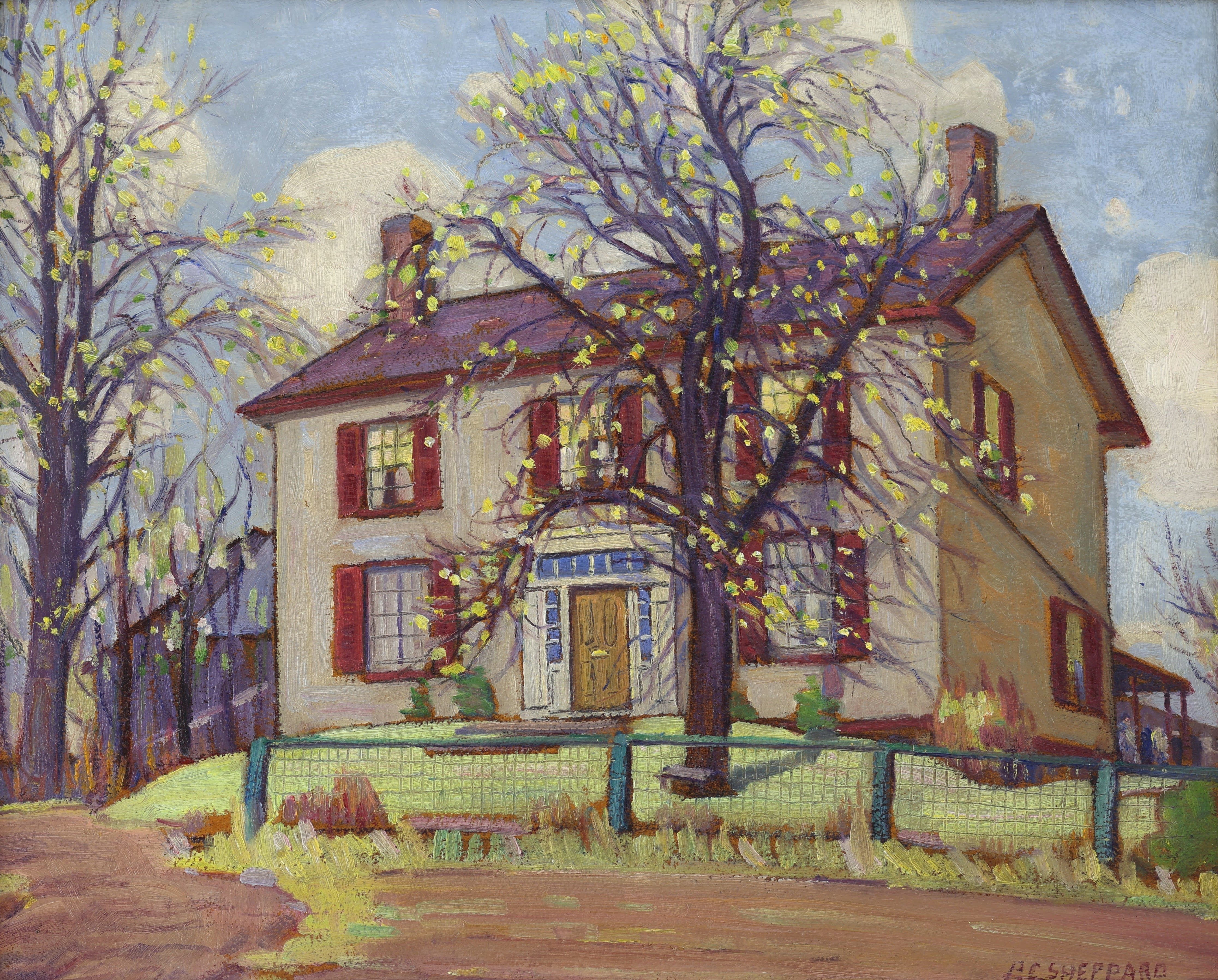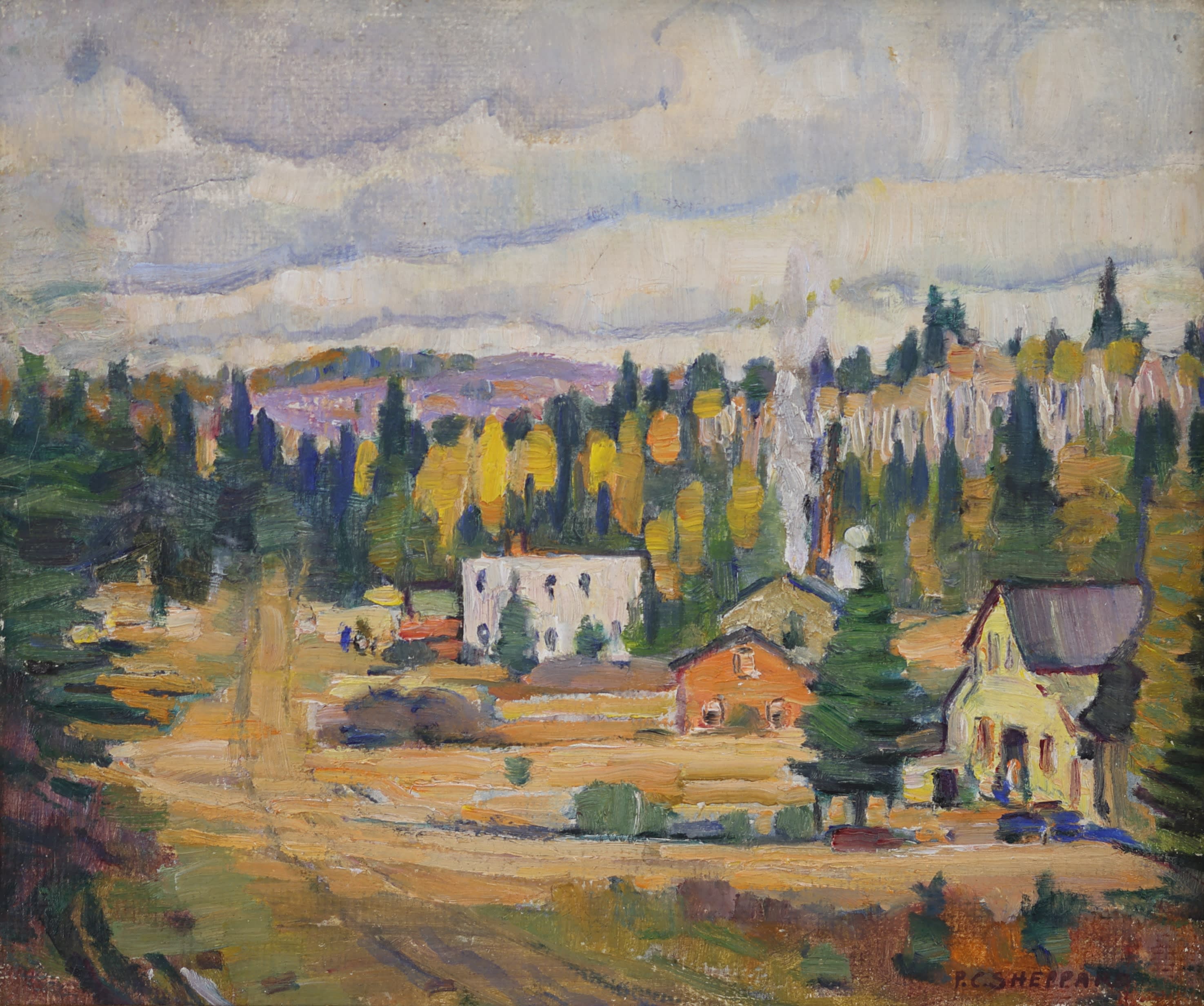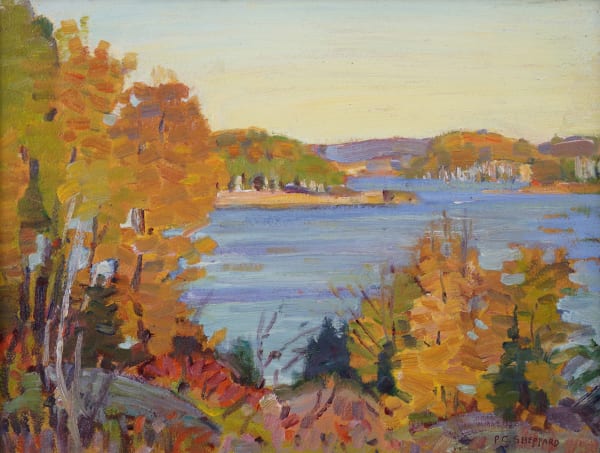“His was a life and art that continually oscillated between the modern and the historical, between creative risk-taking and working within the clearly defined parameters of convention.”
Tom Smart, 2018
Peter Clapham Sheppard (October 21, 1881 – April 24, 1964) was a distinguished Canadian artist born in Toronto, Ontario. Known for his mastery in both lithography and painting, Sheppard was a versatile artist whose works spanned a broad array of subjects including landscapes, urban scenes, horses, and detailed depictions of Muskoka.

Peter Clapham Sheppard; The Open Stream
He received his art training at the Central Ontario School of Art and Design and the Ontario College of Art under notable instructors like George Agnew Reid, J. W. Beatty, and William Cruikshank. His early career was marked by an apprenticeship at Rolph, Clark, Stone Ltd. in Toronto, where he honed his lithographic skills.

Sheppard's talent earned him several prestigious awards, including the Sir Edmund Walker Scholarship and the Stone Scholarship for Life Classes, reflecting his exceptional skills in painting and drawing. By 1912, he became a member of the Royal Canadian Academy of Arts and his influence extended through many exhibitions across Canada and the United States. Notable among these were his participations in The British Empire Exhibition at Wembley in 1925, L’Exposition D’Art Canadien in Paris in 1927, and The World’s Fair in New York in 1939.

Peter Clapham Sheppard; Country House
His works, such as "The Building of the Bloor Street Viaduct (1916)," "Toronto Gasworks (1912)," and "The Engine Home (1919)," are celebrated for capturing the essence of early 20th-century Canadian urban life, reflecting the influences of the Ashcan School and Impressionism. These paintings particularly captured the vibrancy and dynamic growth of Montreal and Toronto, offering a profound connection to Canadian history and culture.

Peter Clapham Sheppard; Tramp Steamers, Montreal Quay
Throughout the 1920s and 1930s, Sheppard was particularly drawn to industrial and urban subjects, blending modernist influences with traditional themes. His art is characterized by dynamic compositions and a vivid portrayal of the Canadian landscape and city life, which remain hallmarks of his style. He taught at the Ontario College of Art’s summer school and traveled extensively in Europe and the United States, enriching his art with international perspectives.

Peter Clapham Sheppard; Near Maynooth, Ontario
Posthumously, Sheppard’s contributions have been increasingly recognized. His works are held in prestigious collections such as the National Gallery of Canada, the Canadian War Museum, and the MMFA. In 2010, his artistic contributions were prominently featured in the "Defiant Spirits" exhibition at the McMichael Canadian Art Collection in Kleinburg, Ontario, curated by esteemed Canadian author Ross King. Peter Clapham Sheppard's profound impact on Canadian art history, his dedication to his craft, and his lasting influence on modernism make him a significant figure in the cultural landscape of Canada and beyond.








